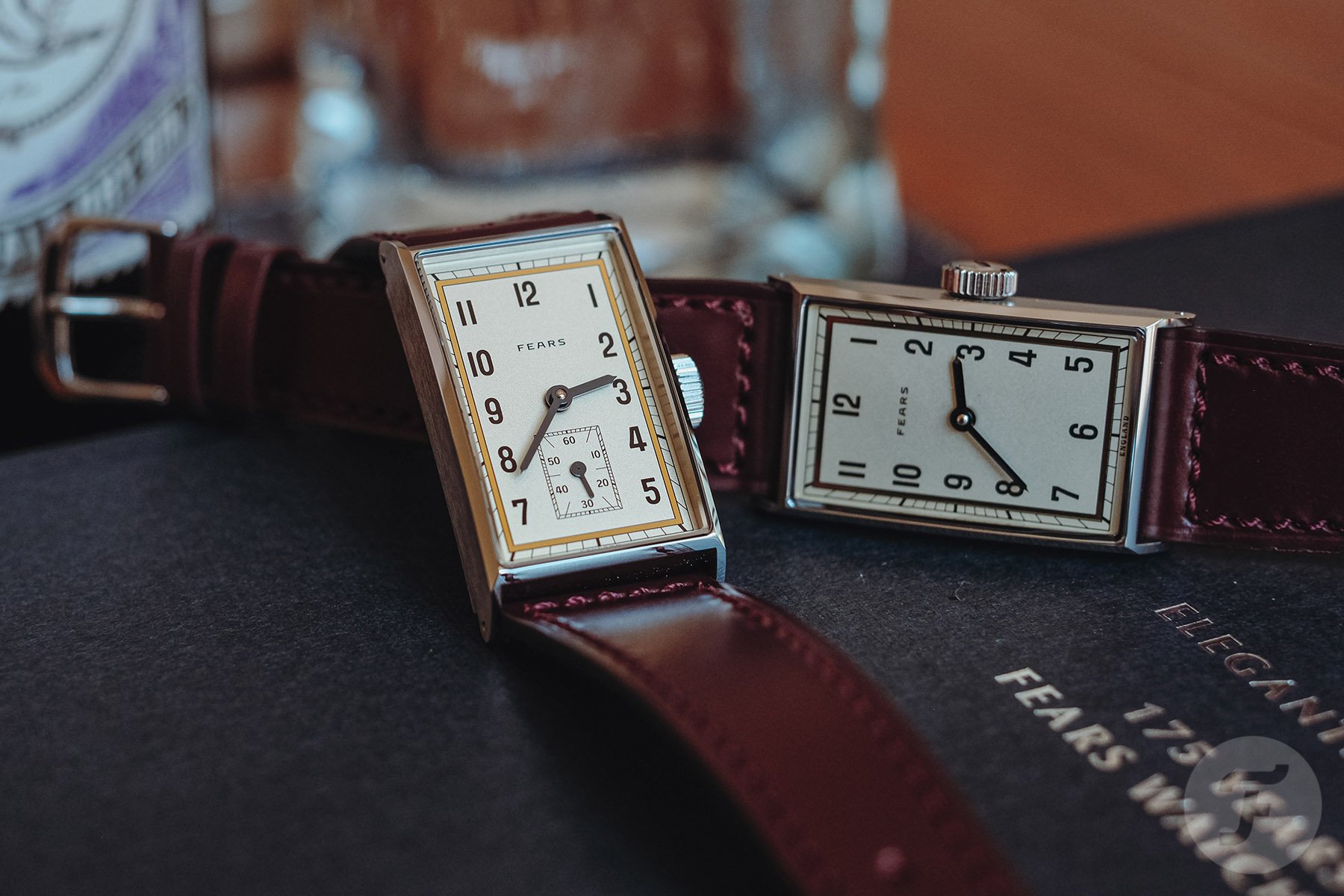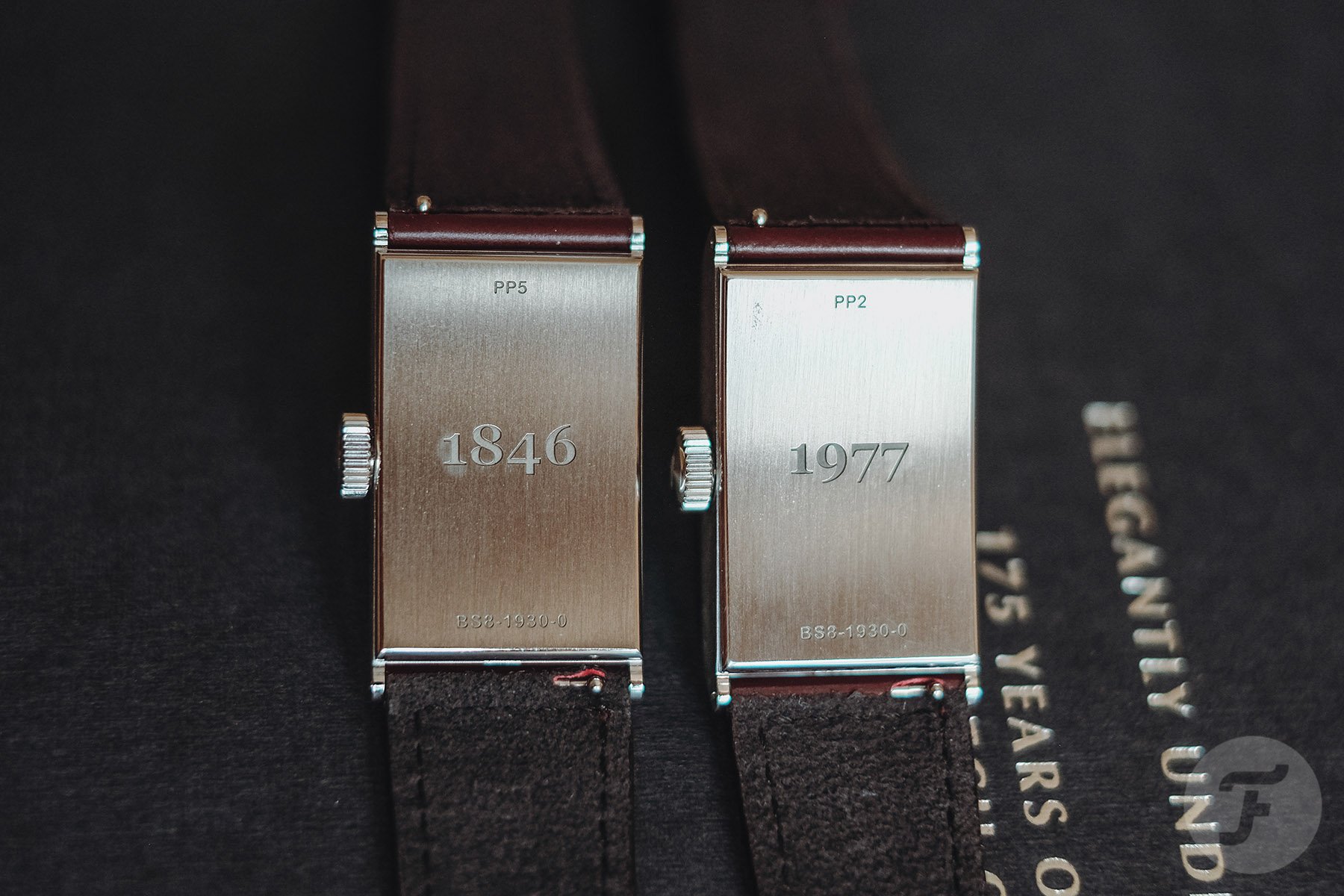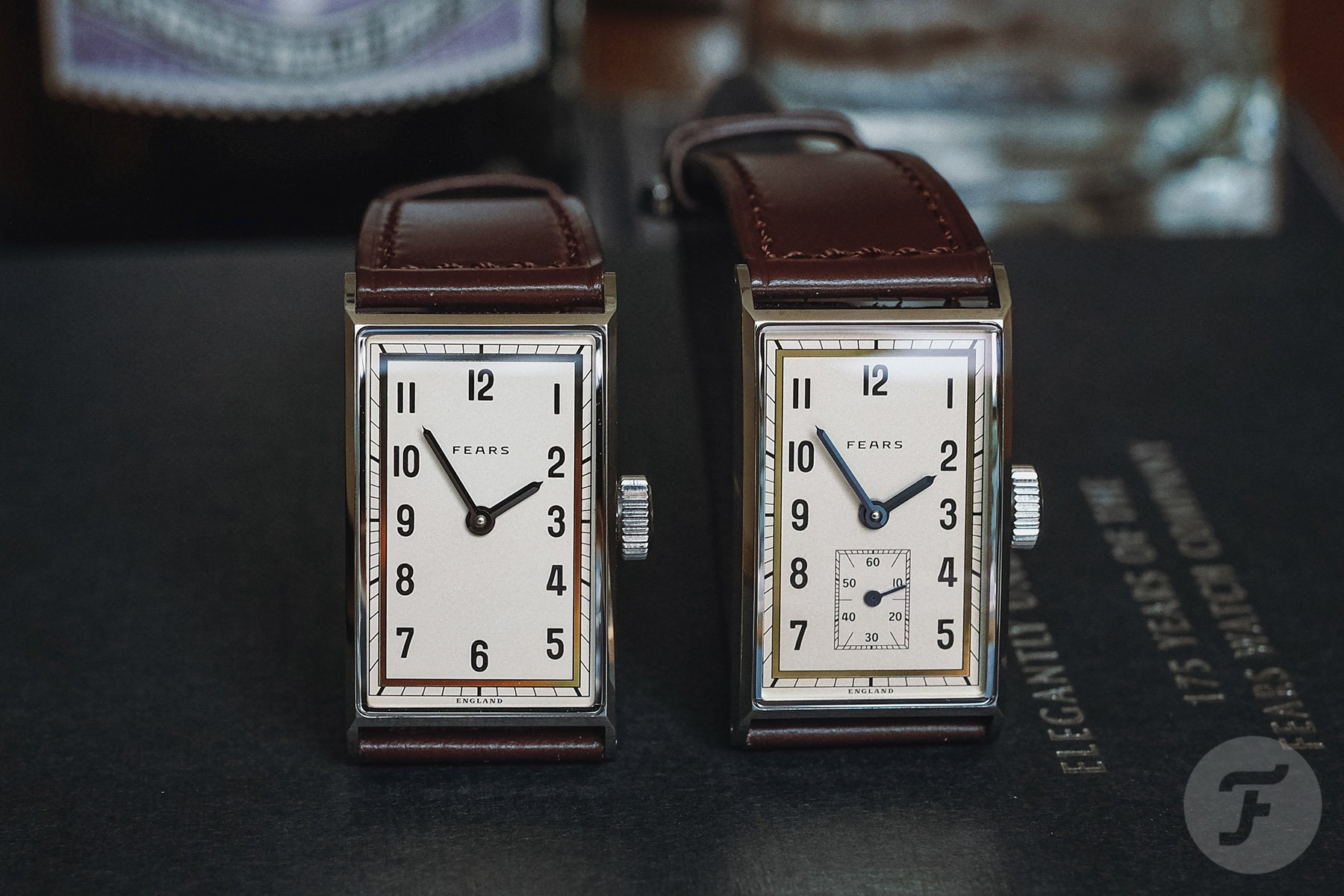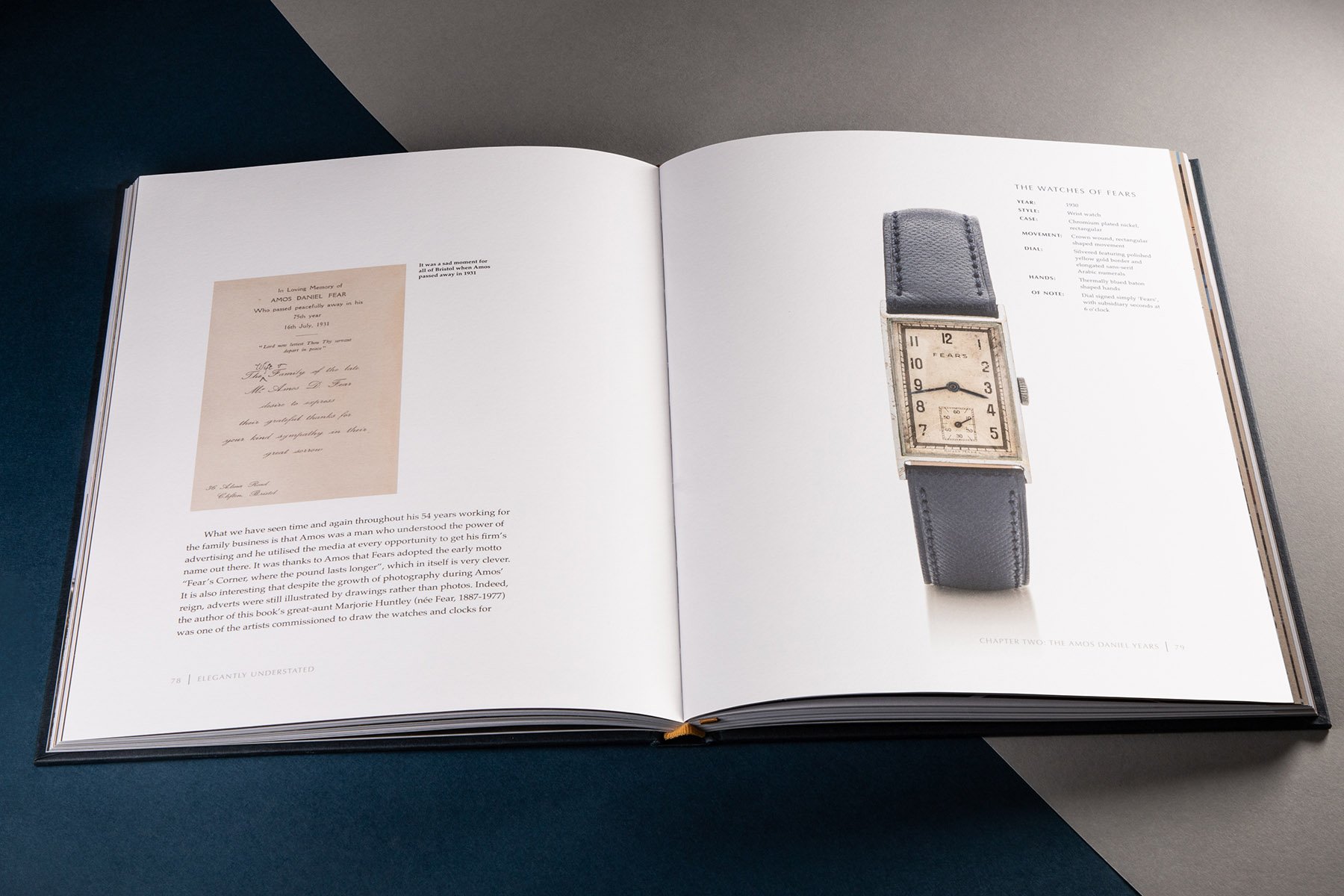1930s New Old Stock Movements Finally See The Light Of Day In Fears New Archival Rectangular Watch
When I picture the 1930s, I am transported to an era of boundless creativity — an age of booming prospects and extravagance. Of course, history distorts reality, as hardship is consistent through all decades — some just more than others. But the Art Deco spirit of the ’30s shines prevalently in media and advertisements of the day. Thus, it proves a challenge to dissociate this decade from the lifestyle portrayed in “The Great Gatsby.” Today, Fears presents its new Archival 1930 watch in a rectangular steel case. Looking at the design, I can’t help but be drawn into the allure of the era. But behind the closed steel case-backs lie the movements powering the watches, repurposed from the ’30s and ’60s for this new limited-edition collection.
The Archival watch celebrates 175 years of the Fears Watch Company. While the trading name has evolved over the past dodransbicentennial, the lineage can be traced back to Edwin Fears in 1846. But today’s announcement does not recreate a pocket watch from Fear’s extensive archive. Instead, Fears opt to skip a few decades to the 1930s, where, amongst the purposeful round wristwatches, a beautiful rectangular Art Deco dress watch perfectly encapsulates its generation. The rail track minute scale, narrow numerals, and golden border identify the timepiece hailing from the ’30s.
Reviving an Archival design lost to time
On paper, you could easily mistake the new Archival model for originating from the same era as its inspiration. But holding the pieces side-by-side reveals some apparent differences. The latest offering from Fears upsizes the watch to a more contemporary 40mm×22mm case size while retaining the same proportions. Milled from a single high-grade 316L stainless steel block, the Archival features a stunning mixture of polished and brushed finishing. The linear graining on the case sides accentuates the thin polished bezel and tops of the svelte lugs. What truly triggers my senses is the curved steel case-back that elegantly contours to the wrist.
Each Fears Archival timpiece has an indivual number engraving to reflect 175 years from 1846 to present day.
At the center of the case-back is an individual engraving to mark the watches’ limited production. Unlike most limited-edition models from other brands, Fears elect to number the pieces produced from 1846 to 2021. Rather than beginning from one (or zero in some cases) and ending in 175, the Archival pays homage to the year the brand was established. The number engraving is also one of the first differentiators between the two new models. For 136 examples, which feature the case-back numbers representing the active years of the Fears brand from 1846–1976, and its revival from 2016–2021. These watches feature two hands without subsidiary seconds. In contrast, the far more limited 39 models reference the dormant years from 1977–2015 and include a running seconds sub-dial instead.
Classic calibers making a comeback
As I alluded to in the introduction, the movements inside of both Archival models originate from Fears’ eclectic heritage. The two-hander repurposes Swiss calibers from the 1960s that Fears would’ve utilized for watches of the era. Specifically, the two-hander is a vintage manually-wound ETA 2360 from the swingin’ sixties, with a casual beat rate of 18,000vph. The even more limited three-hander Archival 1930 shares similar specs but is given an added touch of authenticity in using a Swiss-made new old stock ETA 717 from the dirty thirties. What isn’t dirty is the condition of these calibers as they are fitted into the fresh cases. Fears resassemble and inspect each movement, service and clean all components, and upgrade the mainsprings to enhance reliability — all within the shores of the UK.
The version with the running seconds is a tad thicker by 0.74mm.
With only a finite amount of available vintage movements, the limited run of 175 pieces feels well-justified. The choice for you potential buyers out there then hinges on which of the two versions you find more appealing. The addition of the subsidiary seconds on the 39-piece 1930s powered Archival makes the case ever-so-slightly thicker. The two-hander has a case thickness of 8.54mm, whereas the three-hander comes in at 9.28mm. This distinction is hardly noticeable in person, so really, the decision of which version to go for rests entirely on your dial preference. Despite the slim case and historical mechanism, both variations hold a power reserve of 38-40 hours. It may require some frequent winding, but the large crown featuring an engraved pipette logo makes it an enjoyable task.
Dials to die for
We have already determined that the case of the Archival is spectacular, and the movement is fascinating. But what truly captivates me are the dials of both references. The color is a champagne hue with a subtle yet impactful eggshell texture that contrasts perfectly against the glossy black numerals. Running in parallel with the minute track is a polished 18k yellow gold inlay that shifts in tone, reflecting its surroundings. When looking at the dial, it’s easy to pinpoint this gold touch as the standout feature. But it’s how harmoniously it blends with the champagne dial and sharp corners that make it feel more than just a design flourish.
Solid hands with an intriguing shape.
Rounding off the dial design are the diamond-polished and heat-treated blue hands. Their shape appears to be a nod to the solid platinum hands seen on the Brunswick Pt, albeit smaller for the rectangular case. But looking closely, a diamond-style shape on the pipette-cut tip sets them apart. This small detail was not present on the Brunswick’s hands. Visible only up-close or when moving the watch under a direct light source, the tip of the hand truly stands out, adding to the legibility when reading the time. To date, these are my favorite Fears watch hands. The two-hander Archival with its 1960s heart may provide a more symmetrical layout. But for me, the added detail and functionality of the rectangular running seconds in the ’30s-powered three-hander better resonates the concept of the original watch.
Final thoughts and pricing
Towards the end of last year, I was lucky to spend a decent amount of time with the new-to-market Brunswick Salmon. This new coppery dial color was as fresh as wild-caught fish of its namesake. The watch was an instant hit. Selling out instantly on the Fears online store and generating a first-come first-serve waitlist. The Archival 1930 is a low production run, so Fears may not even have to worry about a waiting list. It’s possible that all examples will be spoken for immediately after today’s announcement. This can be said for one watch already, as it was donated to the Bristol Museum for permanent display. For the other 174 lucky owners, each watch will arrive in a commemorative blue wooden box.
Accompanying each Archival 1930 is an oxblood calf leather strap with 20mm quick-release spring bars. A nice touch is that each strap is tanned in Bristol, UK, by Thomas Ware & Sons. Britain’s oldest vegetable-tanner, and the very same tannery employed by Fears in the early part of the 20th century. The 136-piece limited Archival with two hands is £3,500, and the 39-piece Archival 1930 will run £3,950. These are not inexpensive, by any means, but considering the historic calibers, the attention to detail, and the strong resemblance to the proportions of the original 1930s case, the Archival offers quite a lot for the price. It’s also a fantastic way of breathing life into these old movements.
You can find out more about the Fears Archival 1930 on its website. Suppose you want to learn more about the brand. In that case, I recommend ordering “Elegantly Understated: 175 years of the Fears Watch Company” — a hardback book detailing Fears Watch Company’s complete history from 1846 to the present day.




